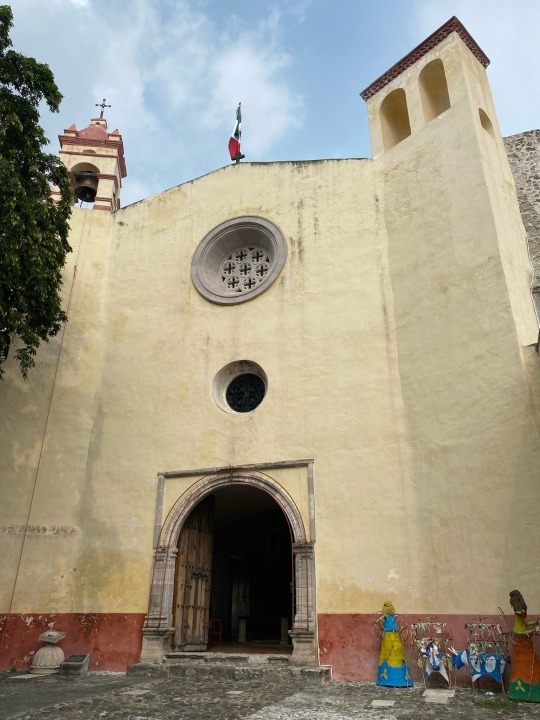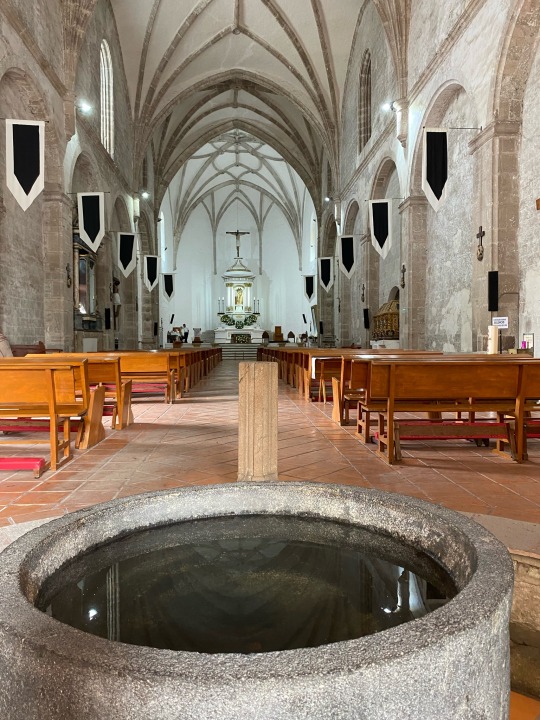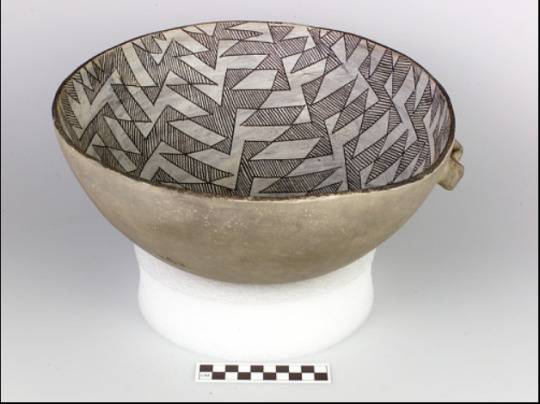#ancient pueblos
Text

Stronghold House, the Eroded Bolder House and Rim Rock House behind it at Hovenweep National Monument
#the dumbest shit in the weirdest places#traveling#travel#road trip#driving#photo#photography#utah#ancient pueblos#hovenweep#hovenweep national monument
2 notes
·
View notes
Text

Welcome to new WangXian Ancient Towns Travel!
Destiny: Peru
(This proyect, is one of the longest for now. In that case, I'll gonna upload 2 draws per week. Hope you like it)
#wangxian#mdzs#lan wangji#wei wuxian#mo dao zu shi#cql#mdzs art#ancient civilizations#pueblos indígenas#魔道祖师#wei ying#lan zhan#peru#travel
28 notes
·
View notes
Text
New petroglyphs discovered at Castle Rock Pueblo on Mesa Verde plateau, including some used for astronomical observations and calendars have challenged perceptions of the settlement.
50 notes
·
View notes
Video
Ruins of the adobe church at Pecos Historical Park by Jim Scully
Via Flickr:
Part of the original mission church remains and can be seen in the Pecos National Historical Park near Pecos, New Mexico.
#Pecos#New Mexico#ancient pueblo#Towa#ngc#national historical park#church#adobe#archeological site#Native American#flickr#Southwest#Snow#Winter
10 notes
·
View notes
Photo

Hazy look at Chaco Canyon's Pueblo Bonito from halfway up the Ancient staircase to North Mesa, San Juan Co, NM. Photo: James C Wilson (May 24, 2023) ::: [Robert Scott Horton]
* * * *
“They say that in the second before our death, each of us understands the real reason for our existence, and out of that moment, heaven or hell is born.”
― Paulo Coelho, Aleph
#Chaco Canyon#Pueblo Bonito#Ancient staircase#New Mexico#James C. Wilson#Robert Scott Horton#quotes#Paulo Coelho#Aleph#heaven#death#meaning
3 notes
·
View notes
Text
Hopi Legends and the ‘Flying Shields’ | Ancient Origins
https://www.ancient-origins.net/myths-legends-americas/hopi-legends-and-flying-shields-001041

View On WordPress
#1300 AD#1958#500 AD#Anasazi#Ancient Ones#Ancient Pueblo People#Ant People#Arizona#Aztec#Blue Star Kachina#Colorado#Creator#Day of Purification#Earth#First Peoples#Flying Shields#Four Corners#Fourth Cycle#Fourth World#Grey Aliens#Hopi#Hopi Mythology#Hopituh Shi-nu-mu#Maasau#Maasaw#Native Americans#New Mexico#Patuwvotas#Peaceful People#Petroglyph
0 notes
Text
I found a Maximum Security Ancient Ruin using Google Earth
youtube
#ancient#indigenous#ruins#native american#south west#ancient history#ancient structure#video#pueblos indígenas#anasazi#Youtube
1 note
·
View note
Text



En Mexico existen lugares literalmente medievales, como los conventos de Morelos que fueron construidos en el siglo XVI, cuando España era aún país medieval.🏰
#gotico#arquitectura#arte#arte sacra#catholic#catolicismo#catolico#arquitectura gótica#gothic#gothic architecture#gothic art#aesthetic#mexico#morelos#ruta de los conventos#pueblo magico#iglesia#ancient#ancientmonuments#ancient church#medieval#Mexico medieval#oaxtepec
1 note
·
View note
Text

Aztec Ruins National Monument, Aztec, NM
#the dumbest shit in the weirdest places#traveling#travel#road trip#driving#photo#photography#new mexico#aztec#ancient pueblos#national monument#ruins
6 notes
·
View notes
Text

Fishing family days
#wangxian#mdzs#lan wangji#wei wuxian#mo dao zu shi#cql#mdzs art#ancient civilizations#pueblos indígenas#魔道祖师#adaptation#ancient#art#pueblos originarios#peru
20 notes
·
View notes
Text
Investigators in Mexico have made a groundbreaking revelation at Cima de San José, unearthing the largest human bone assemblage ever found in southwest Tamaulipas. Imagine the stories hidden within the remains of 48 individual and multiple burials, dating back to the eras between 250 and 650 AD!
These findings offer a rare glimpse into the lives of the Pueblo and Huastec cultures, opening a window into their ancient world. From elaborate sea snail earrings resembling fangs to teeth shaped into sharp points, each artifact narrates a tale of the past.
23 notes
·
View notes
Text
While investigating a site in the US Southwest, archaeologists discovered a series of ancient rock carvings that early Native Americans may have used as a calendar.
The site, known as the Castle Rock Pueblo, is on the Mesa Verde plateau straddling the Colorado-Utah border and is best known for the Ancestral Pueblo settlements that are carved into the surrounding canyon walls, according to a statement.
The Ancestral Pueblo were a group of Indigenous peoples who inhabited the Castle Rock Pueblo from about the 1250s to 1274, according to a 2020 study in the journal Antiquity.
Continue Reading.
81 notes
·
View notes
Text
Preliminaries: Battle of the Black-on-Whites!
Black-on-white pottery is far and away the most common decorated pottery style of the ancient Southwest. There are way, way too many to include them all... in fact, there are too many to include even all the ones I want to show off!
So this is the Preliminary Round - four different black-on-white types will go up against each other... only two will move on to represent black-on-whites in the final bracket.

Vote for your favorite!
Information and details about each type under the cut:
Sosi and Dogoszhi Black-on-white

Dogoszhi Black-on-white jar. Northeastern Arizona, 1050-1200.
These are actually two different types within Tusayan White Ware - Sosi B/W and Dogoszhi B/W. However, like I said, Too Many Whitewares, so I'm grouping them together because there's strong overlap.
Sosi B/W can be identified by its bold, black designs, like the one in the compilation above the cut; Dogozshi B/W has similar design layout, but instead of solid black, they're filled with hatchure (thin, parallel lines. Sometimes, like the image above, the body is a Dogoszhi design, while the neck has a more Sosi-like design.
Sosi and Dogozshi Black-on-whites were built with the coil-and-scrape method (built up of many small coils, probably turned on a turning plate called a puki, and then while the clay was still wet, scraped smooth and sometimes polished). The paint was carbon-based and got its color from a plant called beeweed. These were made in the Kayenta and Tusayan regions of north-eastern Arizona.
Mimbres Black-on-white

Bowl with a Frog, Mimbres Black-on-white. Southwestern New Mexico, AD 1000-1150.
One of the most iconic Southwest pottery types. Literally: one of the few pottery types in the Southwest to display a wide range of icons, human and animal figures. Pre-Classic Mimbres bowls used geometric and rotational symmetry designs more often, mixing bold lines and hatchure; Classic Mimbres bowls tend to have a linear design around the rim, and then a human or animal design on the inside. Various types of figures are seen, but primarily birds, insects, amphibians/reptiles, and twin human figures, in hematite-based paint.
Mimbres bowls are among the most popular to be sold by looters on the black market. Worse, a very large number of the most dramatic Mimbres bowls come from burials; if you see an archaeological pot for sale with an animal design like this, it was almost certainly stolen out of a grave. You can especially suspect this when the bowls have small circular holes smashed or drilled in the center, usually obscuring the figure partially. Archaeologists call these kill holes, from the idea that the pot was "killed" to end its use-life when it was buried with the deceased person. If you see a Mimbres pot with a kill-hole, odds are very good (something like 80%) that it came from a burial. These displayed bowls here are verified to come from non-burial contexts.
Chaco Black-on-white

Chaco (or Gallup) Black-on-white. Pueblo Bonito, Chaco Canyon, north-western New Mexico, AD 1000-1100.
Chaco Canyon! One of the most dramatic, interesting, and still mysterious aspects of the Ancestral Southwest. In a canyon in New Mexico, multiple palatial "Great Houses" were built, with hundreds of rooms, large and regimented plazas, massive kivas (circular subterranean religious buildings), and an incredible amount of decoration and pageantry. Pueblo Bonito, the largest of the Chaco Great Houses, is proven to have had a matrilineal elite/noble lineage. How many people actually lived in the Great Houses? Were they palaces, communal centers, worship centers? Were the Chaco elite a priestly class or a noble caste or a bit of both? How did they mobilize people throughout the Chaco sphere of influence to bring timbers down from the mountains a hundred kilometers away to build these Great Houses? There are a lot of things archaeologists still argue about. Pueblo and Navajo oral histories describe Chaco as an overreach of power that their ancestors eventually rejected, leading to the collapse of Chaco Canyon as a center of social influence throughout the Southwest around 1100. (Modern Pueblo and Navajo relationships to Chaco are complicated. It was an overreach of power, but also an incredible ancestral polity.) Until then, it was certainly a socially, politically, and religiously powerful force.
You can also see this in the pottery: this style of hatchure, the narrow black-and-white lines, was massively popular in Chaco Canyon and seems to have kind of ripple-effected out to the rest of the Southwest who were in or near the Chaco sphere of influence. Hatchure is very common in a lot of black-on-white wares, but very close, very narrow, very even hatchure is strongly associated with Chaco Canyon.

Cylinder jars for chocolate-drinking, as described and confirmed by Dr. Patricia Crown. Chaco Canyon, Pueblo Bonito, 1000-1100.
Also, Chaco Black-on-white cylinder jars were used for a chocolate-drinking ritual, indicating cultural connections, religious ties, and trade routes to Mesoamerica and Maya communities far to the south in Mexico in the 900s-1000s. It's an important thing to remember: None of these cultures or time periods were static, and were almost never insular.
Mesa Verde Black-on-white

Mesa Verde Black-on-white bowls. Southwestern Colorado/northwestern New Mexico, AD 1150-1280.
An immensely popular white ware style, Mesa Verde Black-on-white is associated with the Ancestral Pueblo settlements - including the dramatic and famous cliff dwellings, like Cliff Palace. Bold, heavy, repeating geometric designs in carbon-based paint are the most common, but there are hatched designs and some areas that used mineral paints as well. Paintbrushes to apply these painted designs were made of yucca.
Some of the most fun and famous Mesa Verde B/W vessels are the mugs of Mug House, a site so named because a bunch of mugs were found in it.
74 notes
·
View notes
Note
your post regarding christians learning hebrew made me consider - i'm anishinaabe (ojibwe or chippewa or native american or however you call it) and so i very much hope this does not derail you and is instead only the shared experience i mean it to be - it reminds me of how white people and the descendants of colonizers will mystify & then appropriate native medicine and mythology, our art, languages, and cultures, because they think it has secret ancient magic powers, and that everybody who actually practices that medicine or speaks that language is dead and gone, and that indigenous people are ancient history. when we are still alive and around and speaking those languages and practicing that medicine today. and the only reason we would even be all dead and gone anyways is if the colonizers who now appropriate our culture had succeeded in their plan to wipe us out!! anyways that's just a thought, like i said, i hope this only comes across as solidarity of some sort, i read your post and really felt i related to the experience!
oh this isn't a derailment at all!!! something i've noticed a lot but feel like i don't know enough about to be eloquent with it is the similarities between a lot of indigenous cultures and jewish cultures. idk it's super cool. shoutout to Really Fucking Old cultures and traditions surviving through and despite everything
there was a celebration for 40 years of democracy here in argentina at la plaza de mayo on saturday. lots of argentinian flags everywhere, big concert stage set up, the works. my friend and i went to an encampment on the casa rosada side that i had noticed a few times before. they had hand-painted signs talking about how they're from an indigenous self-advocacy group that has been trying to get an audience with the president for two years and three months. to support their continued stay on la plaza, they had a shop of homemade materials like bags, scarves, baskets, and more. i ended up buying gifts for my siblings, a gorgeous rainbow scarf with designs the man was telling me had all unique meanings and symbolisms in mapuche culture, and a handmade necklace of the tree of life. i told him that being jewish i'm always on the lookout for more scarves i can use to cover my head, and he told me he hopes this will serve me well (it has, i'm in love with it already). when he told me about the tree of life necklace, i told him judaism has similar symbolism, called etz hayim. he thanked me for teaching him the term
i don't know if that was a particularly impactful exchange for him, but there was some sort of solidarity i immediately felt, like our fights are intertwined (as are all our fights but you know what i mean). you put at least some reasons why that solidarity exists here into words. we are parts of cultures that have faced and are still facing attempted genocide after attempted genocide, and yet we are still here, embodying our people and not backing down. as people try to relegate us to some mystical past, we are vocal and fight back. solidarity to you anon, ily and i wish you the best. please feel free to talk to me more about this
i've reached out to the indigenous organizers currently camping out in front of la casa rosada but as of writing this i haven't gotten a response. the website hasn't been updated in a bit, but i'll add what information i have so that more people can learn about this fight in argentina (i'm realizing as i add this stuff that almost everything is in spanish lmao. i'm going to reblog this with the photos of their signs and translations of each. if your browser doesn't automatically translate these links please lmk and i'd be happy to help out anybody interested in learning more)
information about the org:
a story about a previous protest:
a story about the current encampment:
#indigenous liberation#jumblr#landback#land back#christian antisemitism tw#cultural appropriation#solidarity#anarchist#genocide tw#asks#anonymous#argentinian politics
204 notes
·
View notes

